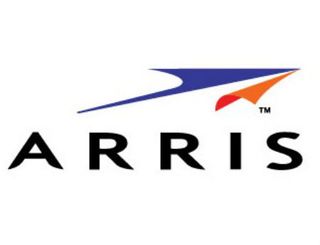Arris CEO: We’re Well Positioned for OTT Video Shift

The shift to OTT-delivered services and its impact on the traditional pay TV market isn't great for Arris’s set-top business, but the company believes it’s also a trend that brings major benefits to the higher-margin broadband networking side of the house.
“In Q3, traditional pay TV subscriber adds in the U.S. were mostly negative” driven by a confluence of cord-cutting and shaving, storm-related disruptions and changes in consumer credit policies, Arris CEO Bruce McClelland observed Wednesday in the company’s’ earnings call.
But the drive toward more OTT-delivered services, he pointed out, requires more broadband bandwidth and a highly-reliable network.
RELATED: Broadband Becoming ‘Epicenter’ of Comcast’s Customer Relationship
“While we strongly believe in the power of the multi-faceted bundle offered by our service provider customers, it's really important for me to emphasize that we are very well positioned to benefit from the growth in over-the-top traffic,” McClelland said.
That was evident in Arris’s Q3 results. Its Network and Cloud unit saw revenues rise 9% versus the prior quarter, and 10% year-over-year, driven by a mix of hardware and software sales for the E6000, its flagship Converged Cable Access Platform.
Arris has also started to ship its Remote PHY products, and expects “several” commercial deployments in Q4, Dan Whalen, president of Arris’s Network and Cloud unit, said.
Multichannel Newsletter
The smarter way to stay on top of the multichannel video marketplace. Sign up below.
RELATED: Cable-Tec Expo: Arris Paves Path to Remote PHY
Results at Arris’s consumer premises equipment business, which includes set-tops and modems, was a bit more mixed
Sales there were down 5% year-on-year due to lower set-top shipments, but were balanced by strong sales for DOCSIS modems and gateways. However, DSL CPE sales were down, reflecting ongoing sub losses in that category by U.S. telcos.
Through the first three quarters of 2017, broadband CPE revenues were up, while video CPE sales were 9% lower through that same stretch, Larry Robinson, president of Arris’s CPE business, explained.
Robinson said Arris remains bullish about DOCSIS 3.1 in the coming months, though the company might fall a little shy of a target to ship 2 million D3.1 CPE devices this year. He said Arris has also started deployments on a new DOCSIS 3.1 voice modem with a key, but unnamed U.S. cable operator.
On the video side of the house, he did point to some momentum occurring at Altice (for a next-gen 4K device for its global footprint), opportunities in Canada from X1 syndication deals, and solid international response from Arris’s new line of Android TV-based box lineup.
RELATED: Arris Helps Put Altice on Next-Gen Video Path
McClelland said Arris remains confident that it will be able to polish off its proposed acquisition of Brocade’s Ruckus Wireless and ICX switch businesses, a deal that is contingent on the closing of a merger between Brocade and Broadcom.
RELATED: Arris’s Proposed Ruckus Wireless Acquisition Hits Another Speed Bump
Arris posted Q3 GAAP revenues of $1.72 billion, up 0.2% versus the year-ago quarter, and net income of 47 cents per diluted share, up from 25 cents. Arris ended the period with $1.4 billion of cash resources.
McClelland said Arris is on track to hit full-year revenues of $6.6 billion to $6.8 billion, and GAAP earnings per share of 61 cents to 81 cents – those numbers exclude anything that would come way of the pending Ruckus acquisition.
